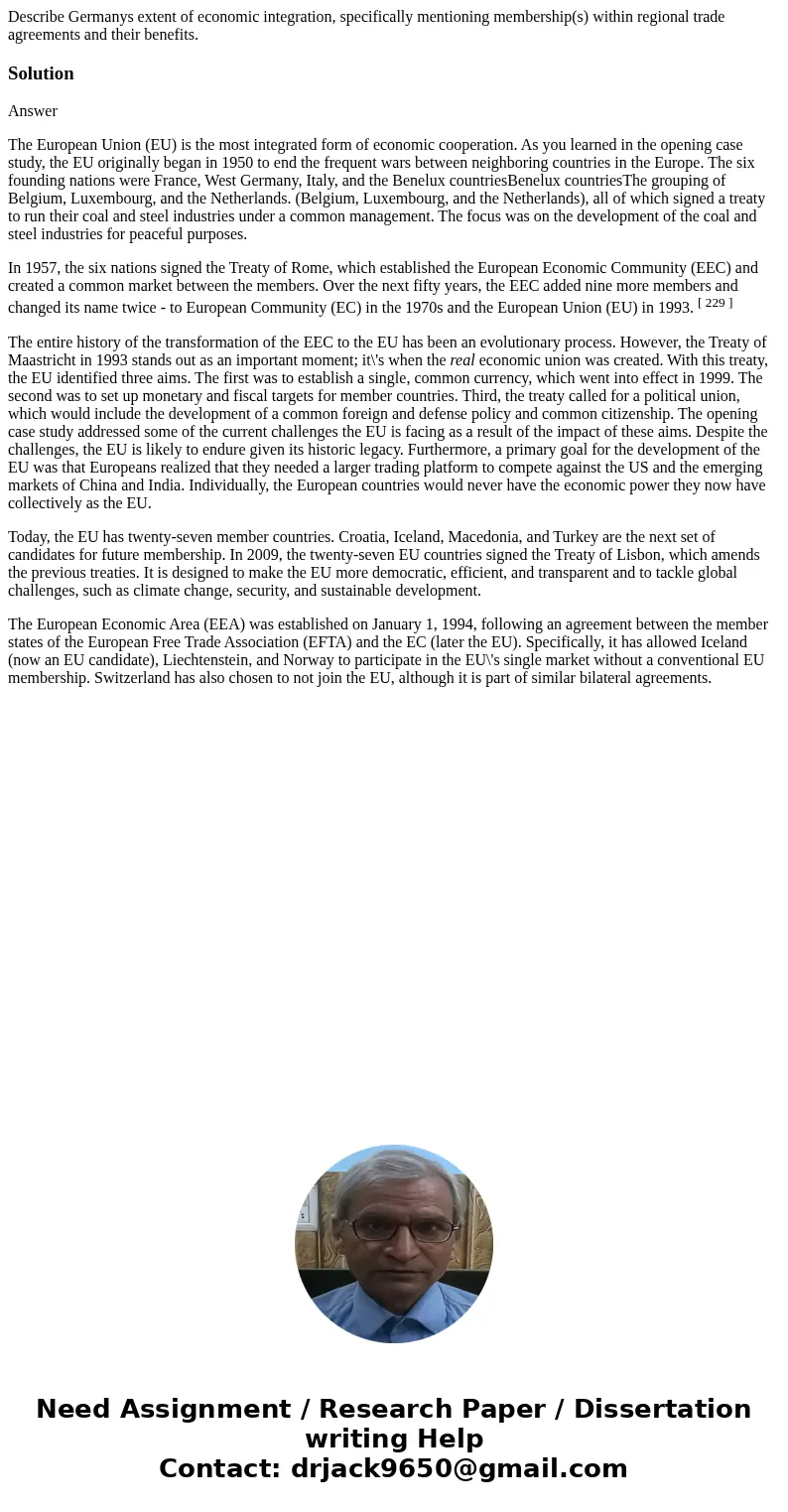Describe Germanys extent of economic integration specificall
Describe Germanys extent of economic integration, specifically mentioning membership(s) within regional trade agreements and their benefits.
Solution
Answer
The European Union (EU) is the most integrated form of economic cooperation. As you learned in the opening case study, the EU originally began in 1950 to end the frequent wars between neighboring countries in the Europe. The six founding nations were France, West Germany, Italy, and the Benelux countriesBenelux countriesThe grouping of Belgium, Luxembourg, and the Netherlands. (Belgium, Luxembourg, and the Netherlands), all of which signed a treaty to run their coal and steel industries under a common management. The focus was on the development of the coal and steel industries for peaceful purposes.
In 1957, the six nations signed the Treaty of Rome, which established the European Economic Community (EEC) and created a common market between the members. Over the next fifty years, the EEC added nine more members and changed its name twice - to European Community (EC) in the 1970s and the European Union (EU) in 1993. [ 229 ]
The entire history of the transformation of the EEC to the EU has been an evolutionary process. However, the Treaty of Maastricht in 1993 stands out as an important moment; it\'s when the real economic union was created. With this treaty, the EU identified three aims. The first was to establish a single, common currency, which went into effect in 1999. The second was to set up monetary and fiscal targets for member countries. Third, the treaty called for a political union, which would include the development of a common foreign and defense policy and common citizenship. The opening case study addressed some of the current challenges the EU is facing as a result of the impact of these aims. Despite the challenges, the EU is likely to endure given its historic legacy. Furthermore, a primary goal for the development of the EU was that Europeans realized that they needed a larger trading platform to compete against the US and the emerging markets of China and India. Individually, the European countries would never have the economic power they now have collectively as the EU.
Today, the EU has twenty-seven member countries. Croatia, Iceland, Macedonia, and Turkey are the next set of candidates for future membership. In 2009, the twenty-seven EU countries signed the Treaty of Lisbon, which amends the previous treaties. It is designed to make the EU more democratic, efficient, and transparent and to tackle global challenges, such as climate change, security, and sustainable development.
The European Economic Area (EEA) was established on January 1, 1994, following an agreement between the member states of the European Free Trade Association (EFTA) and the EC (later the EU). Specifically, it has allowed Iceland (now an EU candidate), Liechtenstein, and Norway to participate in the EU\'s single market without a conventional EU membership. Switzerland has also chosen to not join the EU, although it is part of similar bilateral agreements.

 Homework Sourse
Homework Sourse